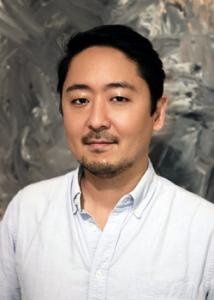Insight into North Korea’s past could forge future relations with U.S.
University of Hawaiʻi at MānoaA recently released book sheds new light on life and labor in North Korea during the decade following the Korean War. Authored by Cheehyung Harrison Kim, assistant professor of history at the University of Hawaiʻi at Mānoa, Heroes and Toilers: Work as Life in Postwar North Korea, 1953-1961, offers an account of postwar North Korea that brings together the roles of governance and resistance. Kim traces the state’s pursuit of progress through industrialism and examines how ordinary people challenged it every step of the way.
“I wanted to find out how North Korea became this fascinating place in the 1960s, the beginning of its Golden Period,” said Kim. “What we think of North Korea and how it is portrayed in the media have been misguided for decades. History shows us that North Korea went through a process similar to many developing countries, including an authoritarian government, which was also present in South Korea.”
In search of national unity and state control, North Korea turned to labor. Mandating rapid industrial growth, the government stressed order and consistency in everyday life at both work and home.
Kim delves into how ordinary people lived and worked during this demanding time, balancing career, duty and happiness. He found that labor was a driving force in society. In addition, how North Koreans lived following the Korean War is similar to how people live today in the U.S.
Even more than coercion or violence, Kim argues, work was crucial to state control. Industrial labor was both a mode of production and a mode of governance, characterized by repetitive work, mass mobilization, labor heroes and the insistence on convergence between living and working.
“There was a major effort by government to change class hierarchy, empower the once downtrodden people while excluding the once privileged people,” said Kim. “Unlike what we imagine of North Korea today, what the government tried to do was similar to governments in countries that experienced colonialism and civil wars.”
“We can learn about the world and about ourselves through North Korea, as well as form a mutually beneficial partnership,” Kim continued. “I’d like to start that right here in Hawaiʻi, with the University of Hawaiʻi as the center of cultural and educational exchange.”
According to Kim, the national division of Korea in 1945 resulting in hostility from South Korea and the United States and the enemy-making process from all sides have created a unique culture in North Korea where nationalism and trust in leadership are strong. “But these features are also found globally. Similarities with North Korea should help us envision a possible future of exchange and partnership between the United States and Korea,” he added.
Published by Columbia University Press and released November 8, 2018, Heroes and Toilers is an analysis of postwar North Korea that avoids the pitfalls of exoticism and exceptionalism to offer a new answer to the fundamental question of North Korea’s historical development.
Heroes and Toilers: Work as Life in Postwar North Korea, 1953-1961 is available for purchase from Columbia University Press, Amazon and through local bookstores.


